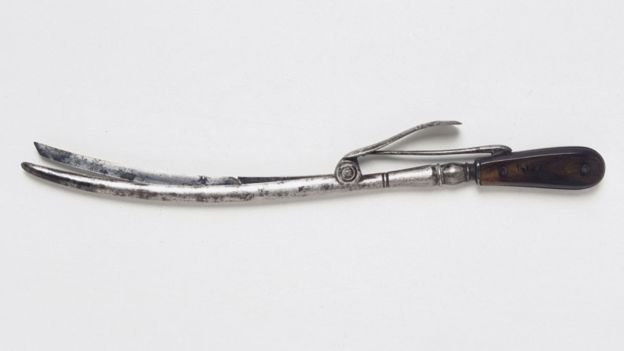Good evening friends of steemit, how are you? Do you want to read something that most people do not know? Well, let's start!

These seven cases are something that one reads and is perplexed, not so much by the case itself, but by how the medicine has increased, even more thanks to theology and what is yet to come!
1. The teeth that exploded

200 years ago, a clergyman from Pennsylvania, United States (identified only as "the Reverend D.A.") began to suffer from an excruciating toothache.
Out of himself in agony, he did everything he could to ease the pain: running through his garden like an enraged animal, banging his head on the ground and plunging his face into icy water.
Unfortunately, all those attempts were in vain.
The next morning, the cleric walked from one side to the other through his study, clutching his jaw, when suddenly "a sharp rumble, like a gunshot, broke his tooth into pieces, giving him instant relief."
Strangely, the explosion of the priest's canine was the beginning of an epidemic of explosive teeth that would eventually be reported in a dental journal under the striking title: "Explosion of the teeth with an audible report".
Apparently, the toothache of a young woman ended spectacularly when her sore tooth burst with such violence that it almost toppled her, deafening her for several weeks.
What could have caused these dramatic explosions? The experts proposed numerous theories, ranging from sudden changes in temperature to the chemicals used in the first fillings.
None of these arguments, however, was particularly convincing, so the case of the teeth that exploded remain unsolved to this day.
2. The sailor swallows knives
In 1799, a 23-year-old American sailor named John Cummings disembarked to spend the night with his companions in the French port of Le Havre.
There, the group saw a magician entertaining a large audience pretending to swallow knives.
Later that night, Cummings, who was already very drunk, boasted that he could swallow knives "like French." Encouraged by his friends, the daredevil sailor put his penknife in his mouth and swallowed it.

When a spectator asked him how many knives he could swallow at the same time, Cummings answered: "All the knives aboard the ship!", Before consuming three more.
It was an impressive feat, although it was idiocy. Although Cummings did not try to swallow more knives for six years, in 1805 he wanted to show off at a party and repeated his performance in front of a group of sailors.
But it was not long before Cummings began to suffer the negative effects of his unorthodox "diet".
A terrible abdominal pain made eating more and more difficult and he began to starve.
Finally he died in 1809 after a long illness.
His doctors, who had not believed his story that he had eaten knives, were initially puzzled, until they dissected his body and were amazed to discover the corroded remains of more than 30 knives inside his stomach and intestines, one of which even pierced your colon.
3. The pigeon haunch cure
Nineteenth-century physicians used a wide range of strange remedies, but few were as strange as the one recommended by the German physician Karl Friedrich Canstatt.
The eminent specialist in childhood diseases gave the following recipe to treat childhood seizures: "If you hold the haunch of a pigeon against the child's anus during the attack, the animal dies early and the attack ceases with the same rapidity."

It was an eccentric idea and, curiously, Dr. Canstatt was not the only doctor who believed it worked.
When the director of St. Petersburg Children's Hospital, Dr. JF Weisse, was summoned to treat a child who was seriously ill, one night in August 1850, he had little success with conventional medications.
Desperate, he asked the parents to get a pigeon. "After the bird was applied to the child's anus," he noted in a medical journal, "he gasped for breath several times, closed his eyes periodically, then his feet contracted in a spasm and finally he vomited."
The boy recovered miraculously, although the same can not be said for the pigeon: after refusing his food, he died a few hours later.
When the news about the "pigeon haunch cure" reached the medical journals in London, they caused a lot of laughter.
But Weisse ignored the taunts and urged further investigation: "Experiments with other poultry are necessary," he wrote, seemingly in earnest.
4. The soldier who removed his own bladder stone
Colonel Claude Martin was an eighteenth-century soldier who spent much of his life working for the British East India Company.
In addition to enjoying a successful military career, he worked as a cartographer, architect and administrator. It became the richest European in India and also built (and flew) the first hot air balloon in the country.
But what is less known about Martin is that he was the first person to perform - and undergo - a medical procedure that would later be known as lithotripsy.

When he developed the symptoms of a bladder stone in 1782, Martin decided not to visit a doctor, realizing that an operation to remove it would be extremely painful.
Instead, the brave Frenchman took matters into his own hands.
Martin designed a special instrument made with a knitting needle and a whale handle. He then inserted this homemade instrument into his own urethra and into his bladder, and scraped the stone little by little.
On top of that, the colonel repeated the horrible procedure up to 12 times a day, for six months.
Surprisingly, it worked: by the end of that period his symptoms had disappeared.
Fifty years later, something very similar to Martin's technique became a standard method for the treatment of bladder stones, thanks to the pioneering research of surgeons in Paris, who apparently did not know what the colonel had done.
Martin was not only the first to perform the procedure, later known as lithotripsy; He was also the first patient to undergo this operation.
5. The story of the miller
On August 15, 1737 a young man named Samuel Wood was working at one of the windmills on the Isle of Dogs in London.
Walking in search of another bag of corn, he did not realize he had a rope hanging.
When passing in front of one of the large wooden wheels, the rope was caught in one of the gears and before knowing what was happening, flew through the air and fell sharply to the ground.
When he got up, Wood felt no pain, except for a slight tingling in his right shoulder. And then he saw an unexpected object hooked on the wheel: an amputated arm.
His arm! He realized with horror.

Showing an admirable composure, managed to go down a narrow staircase and then walk to the nearest house to ask for help.
Losing a limb is not a trivial matter: Wood's injury was so drastic that the doctors who treated the young man feared a fatal outcome. But they were surprised to see that the arm had been torn off so cleanly that his patient's life was not in danger.
Wood recovered from his mishap in a matter of weeks and became a kind of celebrity: local taverns even sold images of the man who had survived when a windmill ripped his arm.
In November 1737, three months after the accident, Samuel was brought before the Royal Society as a living curiosity, with his amputated arm, now preserved in alcohol, which was also presented to the assembled scientists for examination.
6. Slugs in your stomach
In the summer of 1859, a 12-year-old girl from London named Sarah Ann began to complain of nausea. His symptoms were not serious and his parents did not worry until one afternoon he vomited a large garden slug, which was described as "alive and very active".
Sarah Ann then vomited seven more slugs, of various sizes, but all alive, and her parents decided that it was probably time to seek medical attention.
When asked if she had eaten anything unusual, the girl told the doctor that she liked to eat the lettuces in the garden.

The doctor concluded that he had unknowingly swallowed a family of young slugs that had grown to maturity in his stomach for several weeks.
He also noticed that Sarah Ann had only one hand, something he attributed to the fact that his mother had been "scared by a porcupine" during pregnancy.
The story of the slugs seemed implausible and some experts suggested that the girl should be pretending: "Can the garden slug live in the human stomach?", Asked a head of the scientific journal The Lancet.
JC Dalton, a professor of physiology in New York, decided to find out. He did an exhaustive series of experiments that involved wetting live slugs in stomach acid to see what happened.
All the creatures died in a matter of minutes and were digested completely several hours later, and the teacher concluded, reasonably, that they did not; Slugs can not live in the human stomach.
So, what was wrong with Sarah Ann? It seems likely that his illness was more mental than physical.
But whatever it was that afflicted her, it certainly was not a family of mollusks that lived in her stomach.
7. A burning discomfort
Halitosis, also known as bad breath, is an embarrassing and embarrassing condition, but it is rarely dangerous.
In 1886, a man from Glasgow, whose name is unknown, who had been suffering from bad breath for about a month, developed a disturbing new symptom.
When he woke up in the middle of the night, he lit a match to look at his watch. When he tried to blow it, his breath caught fire, causing a tremendous explosion.

His wife woke up immediately and found her husband spitting fire like a dyspeptic dragon.
The man's doctor had never heard anything similar and at first nobody knew what could have caused this unusual phenomenon.
But then another Scottish doctor, James McNaught, found a patient so affected by combustible burps that he had to quit smoking for fear of burning down his house.
When a tube passed inside the man's stomach, Dr. McNaught was able to analyze the contents. He discovered that a blockage in the intestine caused the contents of a man's stomach to ferment, producing large amounts of flammable methane.
Although it is potentially dangerous, this state also served as a funny trick.
In the 1930s, a patient tried to light a cigarette while playing a bridge game, but was overwhelmed by the need to burp.
As a medical journal reported: "When in company he tried to do it discreetly through the nose, leaving his companions electrified when he produced two flames that came out of his nostrils."
FOLLOW ME IN: @desocrates
THANK FOR EVERYTHING PEOPLE!!!!